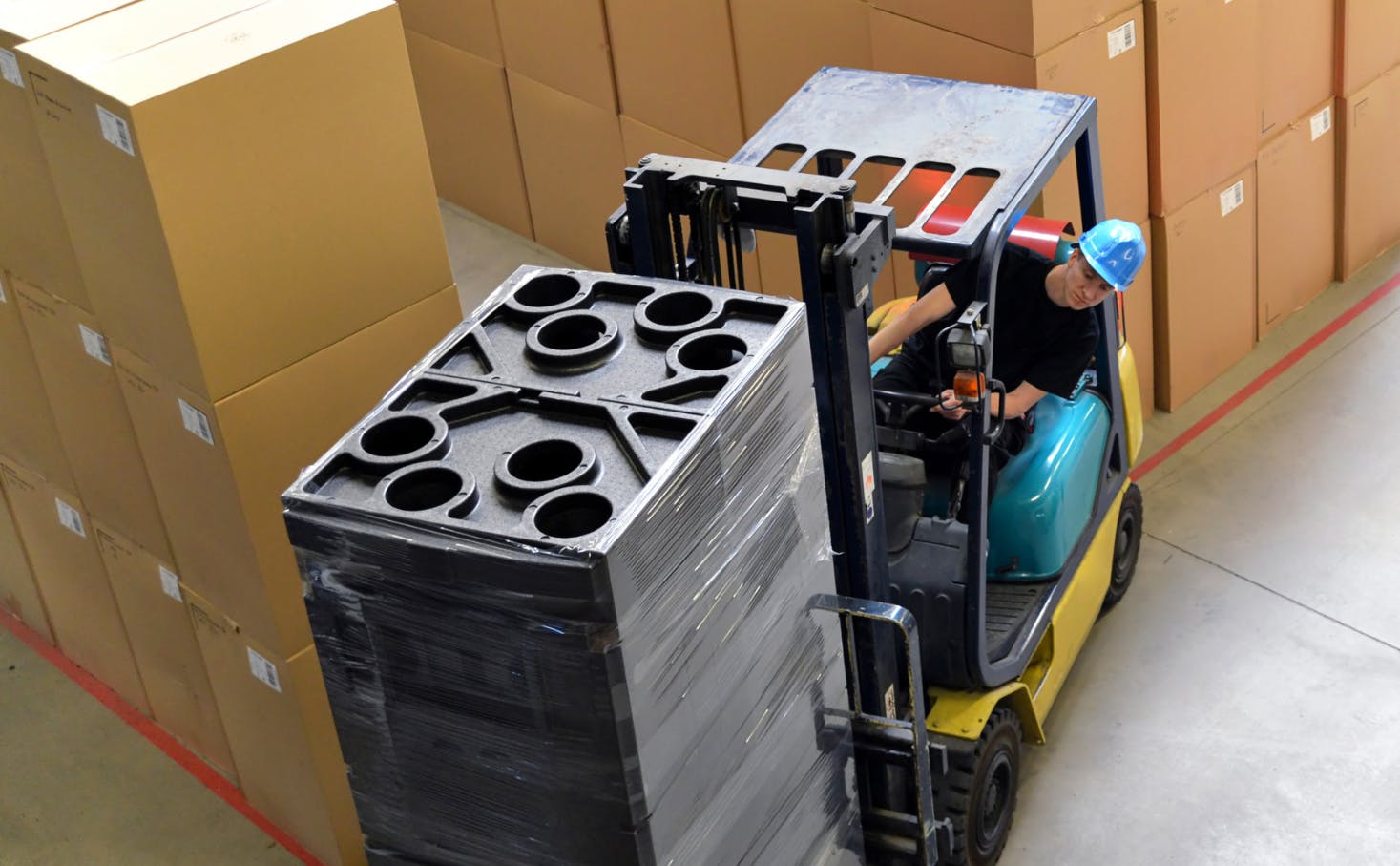Order Optimization
Order optimization is the process of planning shipments to reduce air in loads, minimize product damage, and maximize truck utilization in manufacturing supply chains. For companies using SAP, this solution integrates seamlessly within your system, ensuring shipments are efficiently planned and delivered on time.
For manufacturers, order optimization means fewer transportation headaches, less waste, and more reliable service for customers.
Want to deepen your understanding of advanced load building and order optimization? Explore our E-Guide "Carton, Pallet, and Load Optimization: Business Scenarios and Benefits", and streamline your warehousing, reduce costs and improve sustainability.

What is the value of order optimization for manufacturers?
Every shipment has both cost and risk. Without optimization, you may pay to ship air, deal with damaged goods, and face delays. With order optimization, manufacturers gain:
- Lower costs through better truck load and container use
- Fewer damages with smart loading software and handling rules
- Reduced labor thanks to efficient route scheduling and automation
- Sustainability benefits by cutting unnecessary fuel and emissions
This means your business can meet service expectations while operating leaner and more responsibly.

How does order optimization improve supply chain performance?
Order optimization connects directly with supply chain software and supply chain planning tools to align demand, inventory, and transport capacity. Instead of half-empty trucks or fragmented shipments, you can:
- Plan loads smarter using load optimization to match demand with available capacity
- Apply fleet routing software and routing and dispatch software for the best transport paths
- Integrate with supply chain management software solutions like SAP for end-to-end visibility
- Leverage analytics to refine decisions and support long-term supply management solutions
The result is a supply chain that runs with less waste, fewer delays, and lower costs.

What business results can manufacturers expect?
Manufacturers using order optimization typically achieve:
- 5% - 15% savings in transportation and material costs
- More orders consistently delivered on time
- Fewer damaged goods and returns
- Stronger customer and partner satisfaction
- Reduced carbon footprint with fewer empty miles
In short, you save money, run greener operations, and build reliability into your supply chain.

Which improvements should manufacturers prioritize first, next, and later?
First: Focus on load utilization
Use load optimization and supply chain management logistics software to maximize pallets, containers, and truck space. This cuts transportation costs immediately.
Next: Reduce damage and inefficiency
Adopt vehicle routing software and routing scheduling software to minimize errors, protect goods, and streamline delivery.
Later: Connect with wider supply chain systems
Integrate with software for supply chain management and supply chain planning solutions to unify planning, forecasting, and execution.
Step by step, this approach builds toward a fully optimized, resilient supply chain.
How does order optimization fit into supply chain strategy?
Order optimization is not only about trucks and pallets, it’s about creating a connected logistics ecosystem. By linking with supply chain management software products, routing scheduling software, and supply chain planning tool integrations, manufacturers gain real-time visibility and better decision-making.
For businesses running SAP, optimization can integrate directly into daily workflows, ensuring every shipment is cost-effective, sustainable, and aligned with customer needs.

Ready to explore smarter shipping?
When you adopt order optimization, you move from reactive logistics to proactive supply chain planning. That means less waste, lower costs, and happier customers.
Frequently Asked Questions
What is order optimization in manufacturing?
Order optimization is the process of planning shipments to reduce wasted air, minimize product damage, and maximize truck load efficiency in manufacturing supply chains.
How does order optimization reduce costs?
By using load optimization and supply chain management logistics software, manufacturers cut transportation costs, lower handling expenses, and avoid unnecessary fuel use.
Which tools support order optimization?
Common tools include supply chain software, routing and dispatch software, vehicle routing software, and supply chain planning solutions that integrate with systems like SAP.
What results can manufacturers expect from order optimization?
Companies often achieve 5%–15% transportation savings, more orders delivered on time, and fewer damaged goods, while reducing their carbon footprint.

